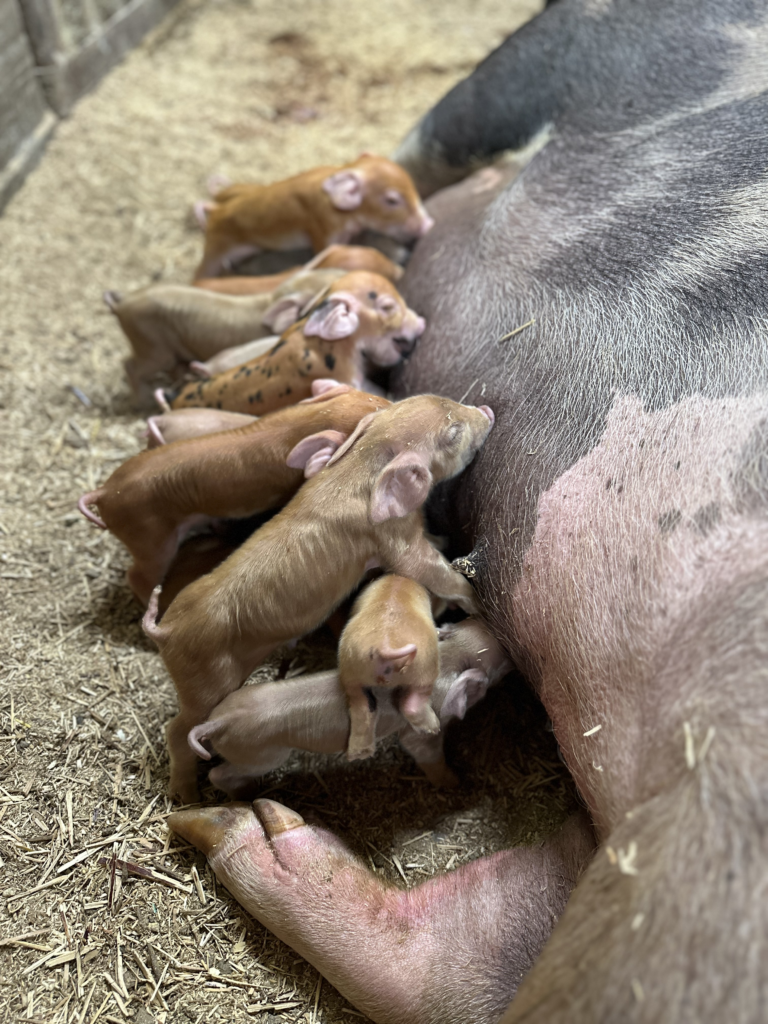
Watch out because here I go again with another post that’s sure to ruffle some feathers.
This picture from the other day fills my heart with warm fuzzies – but also quite a bit of shock – because this sow had a whopping 18 piglets, an unusually high number. But if you look closely, you’ll see that there are only 10. That’s because the other 8 were unfortunately laid on by the sow and crushed under her weight while she stood up to adjust herself. It’s a sad reality with raising pigs and while there are some ways to prevent it, they come with – you guessed it – controversy.
The main method is utilizing what are called farrowing crates. These crates position the sow in the middle and have slats to allow for the piglets to nurse with metal bars to keep the sow in place. There’s been a lot of outcry against the crates as being an inhumane form of confinement and California even passed Proposition 12 to require breeding pigs, along with egg-laying hens and veal calves, to be kept in ways to allow for freedom of movement with a cage-free design and a minimum amount of floor space. If you want your operation and offerings to be considered Certified Humane these same rules also apply.
Now I’ll admit, the appearance of these crates can be a little jarring, especially if you haven’t seen them before. But I think it’s important to examine them from all angles and acknowledge that they do have benefits.
Most obviously the crates prevent accidents in the form of the sow rolling on the piglets. The crates also have a means of providing constant and ready access to feed and water so that they can stay comfortable while the piglets nurse. And when the sow does get up to eat and drink they can do so without stepping on and killing any piglets. Other benefits include keeping farmers safe in the case of an aggressive sow as well as ensuring that sow and piglets stay clean and dry since the crate provides a barrier between them and the floor.
While we choose to be crate-free we also accept and understand the risk of doing so and with margins so tight when raising pigs, losing even just a few piglets in each litter can be extremely costly. In our case, we have selected genetics to help prevent this (although things still happen!) as well as providing creeps with heat lights away from the sows to entice the piglets away. However, nothing is fail porrof and as we saw this week, we still have losses.
Crate free operations are what consumers are asking for. And we happily oblige knowing it’s something we prefer as well. However, with the risk comes additional costs when losses happen and the truth is, it just adds to the increase cost of producing high quality pork.
I’d love to hear your opinion here! Feel free to chime in.
PLEASE COMMENT BELOW